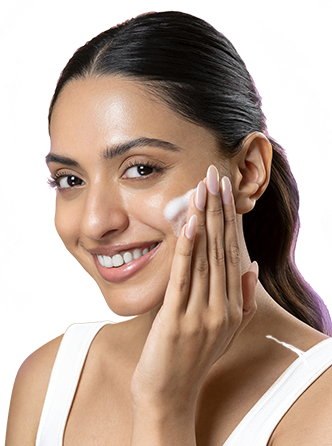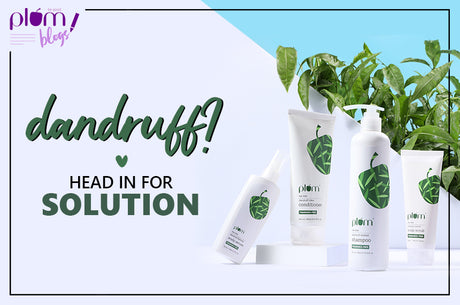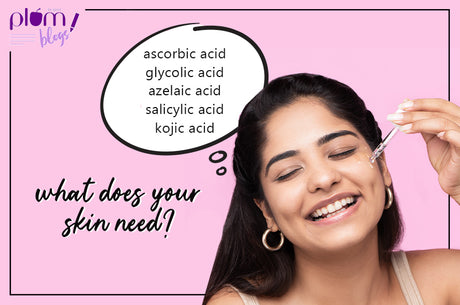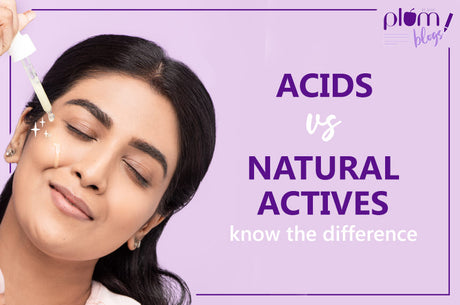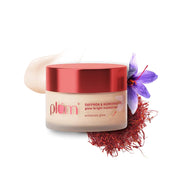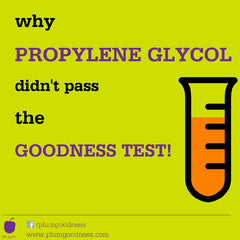 Propylene Glycol – a dirty chemical that is also used in automobile anti-freeze, or a safe compound that’s safe enough to be used in medicines? In continuing with our posts on our what’s out list: parabens, phthalates, SLS and DEA, we cover propylene glycol today. To decide whether to include propylene glycol in our list of safe ingredients (watch our ingredients video here) or not, was a really tough decision for us, and we finally came out against it, even though it cost us a lot of money to do so. Find out why.
Propylene Glycol – a dirty chemical that is also used in automobile anti-freeze, or a safe compound that’s safe enough to be used in medicines? In continuing with our posts on our what’s out list: parabens, phthalates, SLS and DEA, we cover propylene glycol today. To decide whether to include propylene glycol in our list of safe ingredients (watch our ingredients video here) or not, was a really tough decision for us, and we finally came out against it, even though it cost us a lot of money to do so. Find out why.
What is Propylene Glycol?
Propylene Glycol (PG) finds its way into a very wide range of products and production processes. It appears in almost everything ranging from brake and hydraulic fluid to common snack foods. It is an alcohol resulting from the fermentation of carbohydrate and yeast, which is why it is regarded as a carbohydrate in food production.
Available Grades of Propylene Glycol and Uses
PG comes in grades, hence it's important to state the grade under consideration when addressing its toxicity and uses. The industrial grade of PG is often used as active ingredient in the production of antifreeze and engine coolants; polyurethane cushions; paints; airplane de-icers; varnishes and enamels as well as in many products to act as surfactant or a solvent. A much less concentrated grade that is more of a concern in this article is the cosmetic and pharmaceutical grade. The toxicity concern of this grade of Propylene Glycol is more debated due to the fact that it is often ingested and also enters the body through surface application on skin. It’s used as solvent in injectable, oral and topical drug products, and also in human and pet foods. PG has retained a great reputation of being a widely used emulsifying agent and humectant which helps to retain moisture. It is chemically inert. This property is well utilized in the combination of contrasting chemical elements such as in perfume production, helping to produce one single, homologous fluid. The emulsifying property of PG help to homogenize ingredients that will ordinarily not mix. Hence, its use in shampoo and cream production. Its uses in food include the production of bakery products to keep them fresh for a fairly long period and also to dissolve flavoring in drinks. It also help to keep animal feed moist. However, PG still presents threats in many forms following usage, some of which are mentioned below.
Tearing, Redness, Burning and Itching
The side effects of the alcohol-based formula, according to the International Program on Chemical Safety, occur with direct contact with the eyes or prolonged use. Problems caused include tearing, redness, burning, itching and conjunctivitis. The FDA stated that consumers are required to take note of the adverse effects that result from long-term usage as well as excessive exposure in sensitive eyes.
Irritation, Coughing, Wheezing and Nausea
Also in products such as shampoos, skin care lotions, deodorants and room deodorizers, it has been reported that normal use is not harmful, however, excessive application and prolonged use can cause redness and/or itching to skins that are sensitive. This has been confirmed by the International Programme on Chemical Safety, INCHEM. Ingestion could also cause irritation, nausea, vomiting as well as burning sensations to the throat and mouth. Long-term inhalation of PG in room deodorizers can result in irritation of the mucous membranes, coughing, wheezing, and shortness of breath.
Pregnant Women and Infants
PG as an alcohol is said to be metabolized in the body's enzyme pathways which do not mature in humans before 12 to 30 months of age. Infants, pregnant women and patients with kidney dysfunction are therefore unable to eliminate PG in the body. Based on FDA reports, the inability to process and eliminate this product results in potential adverse reactions in infants and pregnant women as well as those with kidney problems.
Doesn't pass the goodness test!
To cut a long story short, Propylene Glycol does not pass the ultimate test of goodness – is it scientifically proven to be 100% safe, beyond doubt? No! Which means that it is better removed from the list of safe ingredients. And for the record, the usage of PG has also been limited to non-food products in Europe. Let us know what you think of our decision by writing to us at hello@plumgoodness.com Cheers, and be good!


